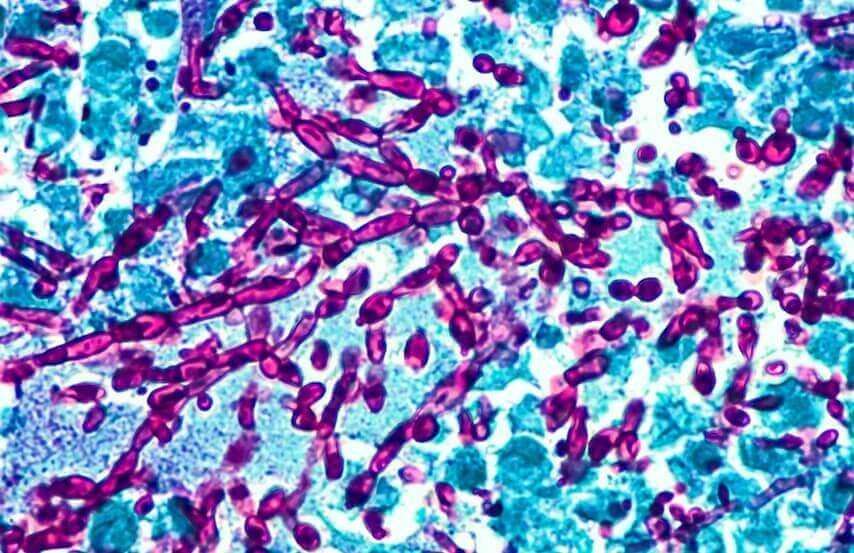The Types of Vaginal Infections and Their Causes


Written and verified by the doctor Nelton Abdon Ramos Rojas
There are various causes of vaginal infections. Therefore, they’re one of the main reasons why many women seek gynecological consultations. Although it’s true that, in most cases, one of the determining factors is intimate hygiene, it isn’t the only one to take into account.
The causes of vaginal infections are from specific microorganisms. For example, in the case of bacterial vaginosis, the pathogens are bacteria, as the name implies. In the case of thrush, on the other hand, yeasts cause the infection.
Below we’ll discuss in more detail the types of vaginal infections that exist, their causes, and their main symptoms.
Imbalances in the vaginal microbiota
The vagina is naturally inhabited by a group of microorganisms that help protect it against pathogens and, consequently, infections. This group is called microbiota or vaginal flora.
Now, when the balance of the vaginal microbiota is disturbed, women experience itching, burning, redness and swelling of the vulva, as well as alterations in their vaginal discharge, among other discomforts.

Main causes of vaginal infections
Experts at Young Women’s Health indicate that the main causes of vaginal infections are:
- Trichomoniasis (tritch)
- Bacterial vaginosis (BV)
- Fungal infection
On the other hand, they clarify that “these causes may include sexually transmitted diseases, a tampon that has been accidentally left in, a congenital problem of the vagina or uterus, or an allergy to or irritation from the use of certain products, such as spermicides, detergents, among others”.
Regarding infections of bacterial origin, the experts at SaludSexall clarify the following: “The most frequent bacterial infections of the genital tract are usually polymicrobial (i.e. involving several germs)”.
These cause alterations in the flow, pelvic pain, and, if not treated correctly in time, can lead to other more serious health problems, such as sterility and increased risk of extrauterine pregnancy.
However, although most vaginal infections have some symptoms in common, each one has a specific set of signs and symptoms. Therefore, they don’t all have the same treatment.
Types of vaginal infections
The following are the main types of vaginal infections.
1. Causes of vaginal infections – vaginal candidiasis

The yeast Candida albicans causes candidiasis. It causes symptoms such as thick, white vaginal discharge (like cottage cheese), as well as itching or burning (especially during intercourse).
2. Bacterial vaginosis
As explained in the MSD Manual, bacterial vaginosis is caused by the alteration of the bacterial balance in the vagina. It’s the most common vaginal infection and the following factors can be causes:
- Having multiple sexual partners
- Using an intrauterine device (IUD)
- Having a sexually transmitted disease
The most characteristic symptom of this disease is altered vaginal discharge. The discharge is gray (or white), abundant and thin, as well as foul-smelling (with a fishy odor).
Read this article: Naturally Strengthen Your Immune System with Oyster Mushrooms
3. Trichomoniasis
The protozoan Trichomonas vaginalis causes the vaginal infection trichomoniasis, which is an STD.
Its main characteristics are a green or yellow vaginal discharge, which may be abundant, have a fishy odor and be accompanied by itching or irritation. It also causes discomfort when urinating.
4. Chlamydial vaginitis

We recommend you read: Relieve Bacterial Vaginosis with Five Natural Remedies
The sooner, the better
In conclusion, all vaginal infections require immediate treatment due to the complications they can cause in the long term, as well as the deterioration of your quality of life.
If you are experiencing any of the above-mentioned symptoms, the best thing you can do is go to a specialist doctor so that they can indicate a treatment as soon as possible, depending on the kind of vaginal infection you have.
All cited sources were thoroughly reviewed by our team to ensure their quality, reliability, currency, and validity. The bibliography of this article was considered reliable and of academic or scientific accuracy.
- White, B. A., Creedon, D. J., Nelson, K. E., & Wilson, B. A. (2011). The vaginal microbiome in health and disease. Trends in Endocrinology and Metabolism. https://doi.org/10.1016/j.tem.2011.06.001
- Mashburn, J. (2012). Vaginal Infections Update. Journal of Midwifery and Women’s Health. https://doi.org/10.1111/j.1542-2011.2012.00246.x
- Hainer, B. L., & Gibson, M. V. (2011). Vaginitis: Diagnosis and treatment. American Family Physician. https://doi.org/10.2165/00003495-197204050-00004
- Gonçalves, B., Ferreira, C., Alves, C. T., Henriques, M., Azeredo, J., & Silva, S. (2016). Vulvovaginal candidiasis: Epidemiology, microbiology and risk factors. Critical Reviews in Microbiology. https://doi.org/10.3109/1040841X.2015.1091805
- Malhotra, M., Sood, S., Mukherjee, A., Muralidhar, S., & Bala, M. (2013). Genital Chlamydia trachomatis: an update. The Indian Journal of Medical Research.
This text is provided for informational purposes only and does not replace consultation with a professional. If in doubt, consult your specialist.








